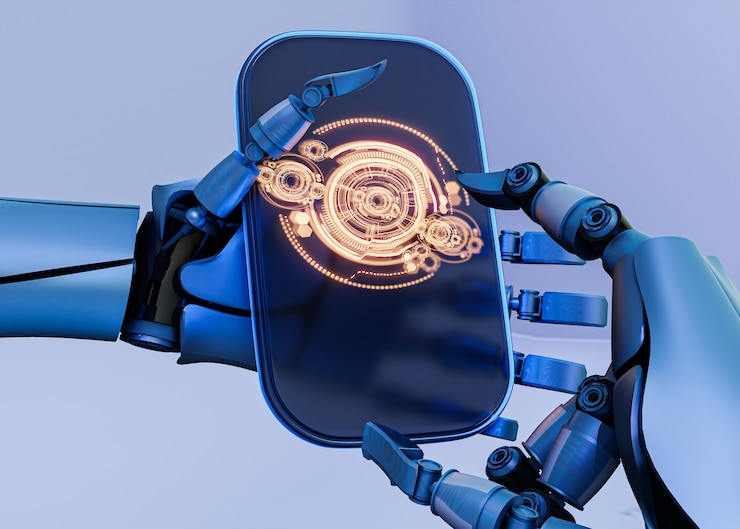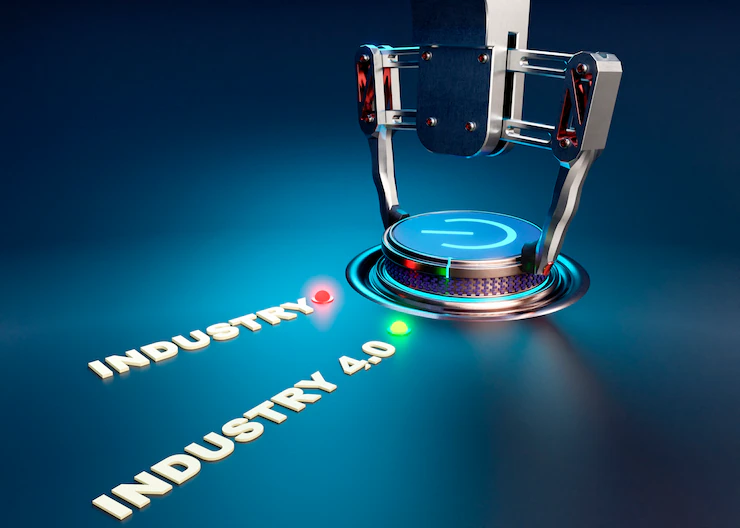In the past few years, the manufacturing sector has undergone a remarkable transformation through the implementation of industrial automation. This has resulted in a revolutionized approach to production processes, leading to unparalleled levels of productivity.
With continuous advancements in technology and the emergence of artificial intelligence (AI), industrial automation is now positioned to play a more profound role in shaping the future of numerous industries.
We aim to delve into the present trends in industrial automation and examine its potential for future growth, shedding light on the advantages it brings as well as the challenges that may arise.
Let’s take a walk through to how the future looks like :
1. Integration of AI and Machine Learning: One of the most prominent trends in industrial automation is the integration of AI and machine learning algorithms. These technologies enable machines to learn from data, optimize operations, and make informed decisions independently.

By analyzing vast amounts of real-time data, AI-powered systems can identify patterns, detect anomalies, and improve overall efficiency. This trend is set to continue, with AI and machine learning becoming indispensable tools for industrial automation, leading to intelligent and adaptive manufacturing systems.
2. Collaborative Robotics: Collaborative robots, or cobots, are designed to work alongside humans in a shared workspace. They are equipped with sensors and safety features that allow them to collaborate safely and efficiently with human workers. Cobots are gaining popularity due to their flexibility, ease of programming, and ability to handle repetitive tasks. As advancements in robotics continue, we can expect to see increased collaboration between humans and robots, leading to enhanced productivity, improved ergonomics, and reduced operational costs.

3. Industrial Internet of Things (IIoT): The Industrial Internet of Things (IIoT) refers to the network of interconnected devices, sensors, and machines that collect and exchange data in an industrial setting. IIoT enables seamless communication and data sharing between various components of a manufacturing system, fostering real-time monitoring, predictive maintenance, and optimization of processes. As the number of connected devices increases and 5G networks become more prevalent, the IIoT will become the backbone of industrial automation, driving efficiency, productivity, and cost savings.

4. Edge Computing: Edge computing involves processing and analyzing data at or near the source, rather than sending it to a central cloud server. This approach minimizes latency, reduces bandwidth requirements, and enhances real-time decision-making capabilities. In industrial automation, edge computing enables rapid data analysis and response, allowing for faster and more precise control of machinery and processes. With the proliferation of edge computing devices and the growth of edge AI, this trend will play a pivotal role in enabling intelligent and decentralized automation systems.

5. Cybersecurity and Data Protection: As industrial automation becomes more interconnected and reliant on digital systems, ensuring robust cybersecurity measures is crucial. Protecting sensitive data, preventing unauthorized access, and safeguarding against cyber threats are paramount in maintaining operational continuity. Future industrial automation systems will emphasize the implementation of robust cybersecurity protocols, including encryption, authentication, and secure communication channels, to mitigate risks and protect against potential breaches.

6. Autonomous Mobile Robots (AMRs): Autonomous mobile robots (AMRs) are poised to transform material handling and logistics operations within industrial settings. These robots are equipped with advanced sensors, mapping capabilities, and navigational algorithms, enabling them to move autonomously in dynamic environments. AMRs can transport materials, goods, and components efficiently, reducing manual labor and streamlining supply chain operations. With ongoing advancements in AMR technology, we can expect improved agility, adaptability, and collaboration between humans and robots in industrial settings.

7. Augmented Reality (AR) for Maintenance and Training: Augmented Reality (AR) has the potential to revolutionize maintenance and training processes in industrial automation. By overlaying digital information onto the real-world environment, AR can provide real-time guidance, instructions, and visualizations to technicians and operators. AR technology allows for remote troubleshooting, step-by-step guidance, and virtual simulations, reducing downtime, improving maintenance efficiency, and enhancing worker training. As AR applications become more sophisticated, they will empower industrial workers with valuable insights and support, improving overall productivity and reducing errors.

8. Sustainable Automation Practices: Sustainability is becoming a crucial focus in industrial automation. The integration of renewable energy sources, energy-efficient equipment, and optimized resource management will lead to greener and more sustainable manufacturing processes. Automation will enable precise control over energy consumption, waste reduction, and carbon footprint. As businesses strive for sustainability, we can expect to see advancements in eco-friendly automation technologies, such as energy-efficient machines, smart grids, and closed-loop systems, contributing to a more sustainable future.

Conclusion:
The future of industrial automation holds immense potential, driven by advancements in AI, robotics, IoT, AR, and sustainability practices. These upcoming advancements will not only improve operational efficiency but also pave the way for new business models, customization capabilities, and human-machine collaboration. As industries embrace these innovations, we can anticipate increased productivity, cost savings, and a more sustainable and technologically advanced industrial landscape. The journey towards the future of industrial automation is filled with possibilities, and the potential for transformative change is just around the corner


Thanks for sharing your info. I really appreciate
your efforts and I will be waiting for your further write ups thanks once again.
Thankyou Keesha! You should check out our website currently where we bringing to you more valuable Industry Insights.
I believe that is one of the so much significant info
for me. And i’m happy reading your article.
Pretty! This was an incredibly wonderful article. Thanks for
providing this information.
Keep on working, great job!
My family members always say that I am killing my time here at web, however I know I
am getting experience all the time by reading thes nice articles.
It’s an amazing piece of writing in favor of all the internet viewers;
they will obtain benefit from it I am sure.
Hey There. I found your blog using msn. This is a very well written article.
I’ll be sure to bookmark it and return to
read more of your useful information. Thanks for
the post. I’ll certainly return.
It’s really very difficult in this busy life to listen news on TV, thus I only use internet for
that purpose, and obtain the latest information.
I have to thank you for the efforts you have put in writing this website.
I am hoping to view the same high-grade content from
you later on as well. In truth, your creative writing abilities has motivated me to
get my own, personal blog now 😉
It’s really a great and helpful piece of information. I am satisfied that you just shared
this helpful info with us. Please stay us informed like this.
Thank you for sharing.
whoah this weblog is fantastic i like reading your posts. Keep up the great work!
You understand, lots of individuals are looking around for
this information, you can help them greatly.
bookmarked!!, I like your blog!
It’s very simple to find out any topic on web as compared to
textbooks, as I found this article at this site.
always i used to read smaller articles or reviews which also
clear their motive, and that is also happening with this article which I
am reading at this time.
I am in fact pleased to glance at this weblog posts which contains tons of
useful facts, thanks for providing such statistics.
Way cool! Some extremely valid points! I appreciate you writing
this write-up and also the rest of the website is very good.
Hi there it’s me, I am also visiting this web site daily, this web
page is in fact good and the viewers are in fact sharing good
thoughts.
This is really interesting, You’re a very skilled blogger.
I’ve joined your feed and look forward to seeking more of your
fantastic post. Also, I’ve shared your site in my social
networks!
I was able to find good info from your blog posts.
Good day I am so delighted I found your website,
I really found you by mistake, while I was searching on Google for something else, Anyhow I am here now and
would just like to say cheers for a incredible post and a all round interesting blog (I also love the theme/design), I don’t have time to look
over it all at the moment but I have book-marked it
and also added in your RSS feeds, so when I have time I will be back to read more, Please
do keep up the superb b.
Helpful info. Lucky me I found your web site by
chance, and I am surprised why this twist of fate did not happened in advance!
I bookmarked it.
If some one desires expert view on the topic of running a blog afterward i advise him/her
to pay a visit this website, Keep up the fastidious
job.
Your writing has a way of sparking meaningful conversations.
Thanks for sharing. I read many of your blog posts, cool, your blog is very good.
Keepp oon writing, great job!